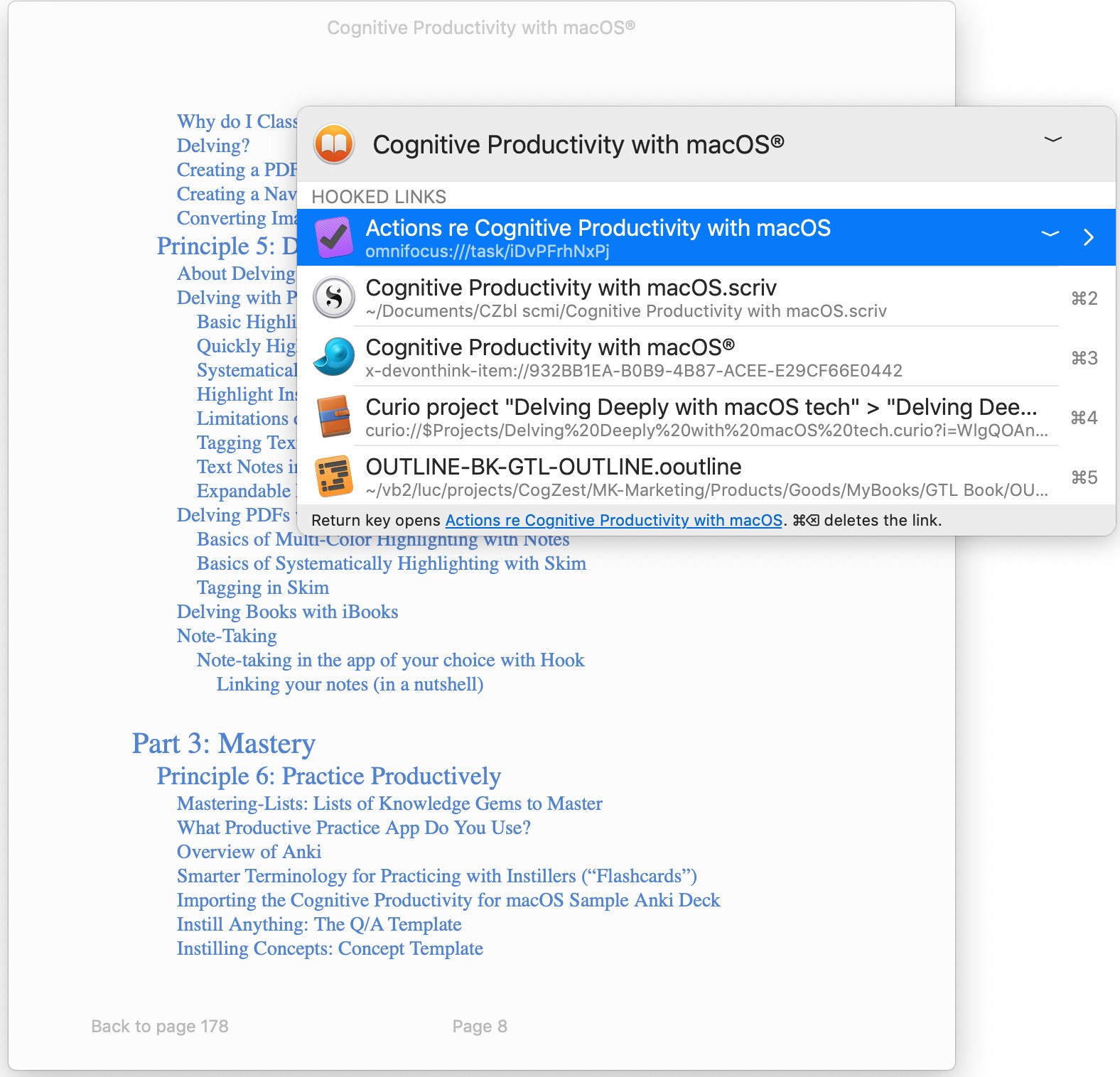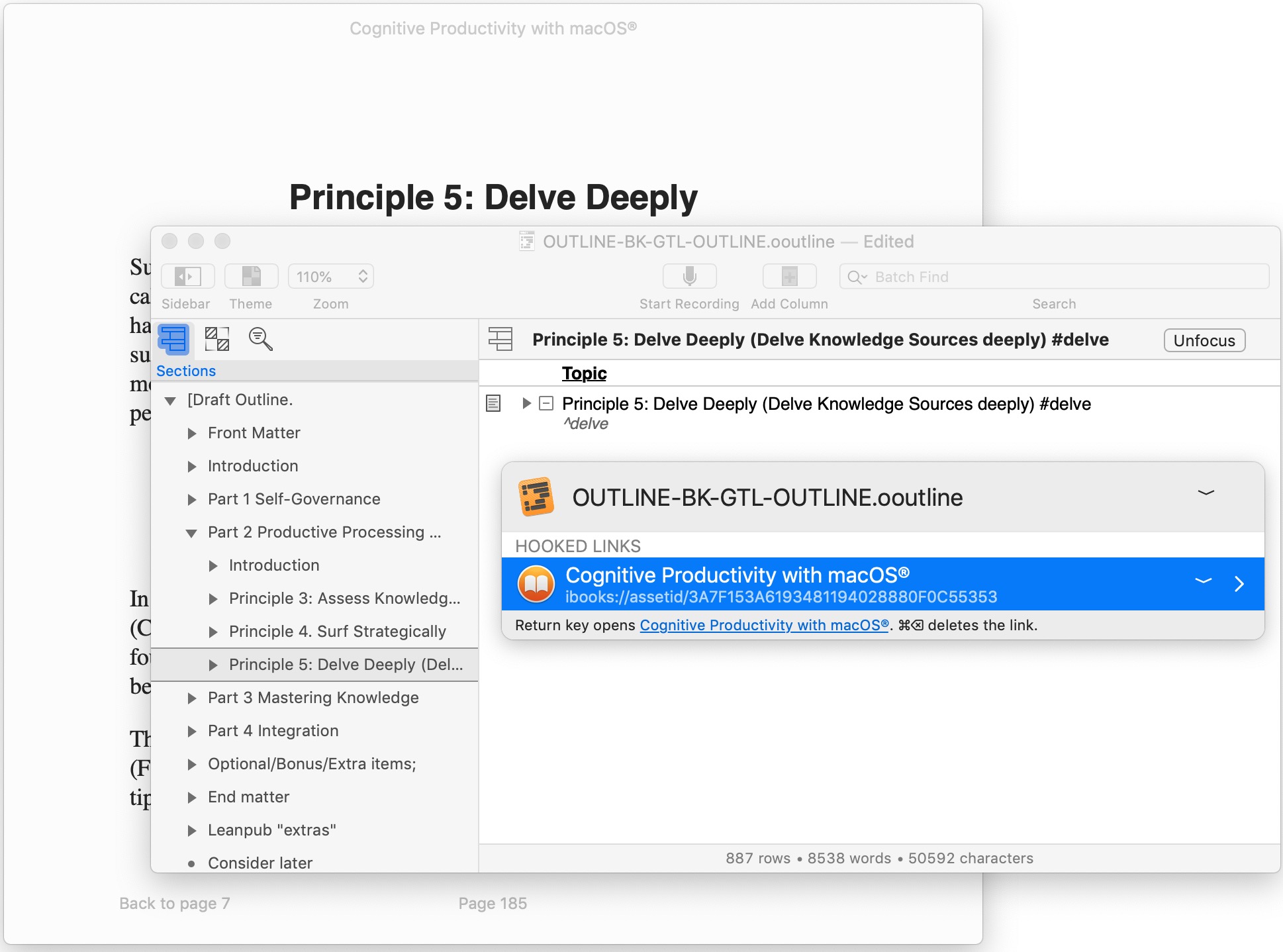In reading about brilliant minds, like Charles Darwin, Richard Feynman, Bill Gates, Warren Buffett and Charlie Munger, you have probably learned that they tend to read, a lot. And they read deeply. This was recently illustrated in the Netflix documentary, Inside Bill’s Brain: Decoding Bill Gates.

To read deeply, we need to take notes. The Feynman technique, for instance, involves self-explaining ideas with written and visual notes.
However, in my Cognitive Productivity books, blog posts (at CogZest), and on this website, I have long contended that people take fewer notes than they should about the book they read. Here’s my explanation for this state of affairs:
- In-line note-taking tools in ebook and PDF readers are very limited. For example, they don’t support outlining, embedding graphics, or doing calculations. Plus, they make your notes nearly impossible to find outside the document.
- Web browsers lack (adequate) annotation tools.
- Even great bookmark managers like Pinboard only support plain-text notes.
- Readers could (and sometimes do) use powerful apps textual and graphical note-taking tools, and spreadsheets for that matter, but they lack a system for quickly navigating between their notes and what they are about.
- Readers are being told by fans of analog tools that they could learn better by taking notes on paper. But paper does not scale or transport very well, and lacks search tools. (And Hello! What about Apple Pencil? That’s virtually analog.)
Ironically, what compounds this note-taking problem is readers’ desire to learn more! They read so much every day that they can’t organize their notes efficiently enough. Why would someone take notes if they can’t find or access them quickly while reading, let alone weeks or months later?
My Cognitive Productivity books provide solutions to these problems, while arguing against Nicolas’ Carr’s The Shallows and implicitly Cal Newport’s works on digital minimalism. (My views are much more aligned with the views of my fellow Canadian’s, Clive Thompson’s, Smarter Than You Think.)
I described a pro-active technical solution to the problems above, with the “Delve Deeply” principle. This principle is still relevant; but Hook 1.7 solves an outstanding information challenge facing knowledge delvers: navigating notes about ebooks.
Take notes about Books ebooks in your favorite apps!
Today, we are delighted to announce that Hook 1.7 has been released, with support for Apple epub Books!
This means that you can open an Apple Book on your mac, and do Hook to New. This will
- create a new note in the app of your choice. If you use
Hook to New(⌘N), Hook will use your default note-taking app. UseHook to New…(⌃⌘N), and Hook will allow you select an app for the ‘note’. - store it (on Finder or in the app’s database)
- name it: based on the book’s name, with an optional prefix or suffix, such as
[, to facilitate finding it with a context-free search tool like LaunchBar, Alfred, Spotlight or HoudahSpot. - optionally tag it, and especially:
- hook it to the book.

As illustrated in the screenshot above, hooking the book and notes together means that when you invoke Hook in the context of the book, you will see your note document(s). And when you invoke Hook in the context of the notes, you see the book.
This means you can instantly navigate between ebooks and notes about them.
Textual note-taking
Using Hook, you can take all kinds of notes about a book, in your favorite writing apps, such as:
- BBEdit: √👍
- iTextPro: √👍 (per forum post)
- Notebooks 2: √👍
- Nisus Writer and Nisus Writer Pro √👍: (forum):
- nvUltra: √👍
- Typora: √👍
- UltraEdit: √👍
- VNote: √👍
- Voodoopad note-taking app by Primate Labs: √👍
The following apps are linkable, though they lack full linking automation:
- Bear writer: √🤔 (English and German)
- Drafts: √🤔 (per Forum post).
So apps like Hook need to rely on UI scripting to control the latter two.
Visual note taking: mind-mapping, drawing diagrams, etc.
Hook also makes it easier to exploit your brains’s visual-spatial-motor capabilities! Link your books to linkable visual documents in great apps like:
- Curio: √👍
- Diagrams: A Brand New Diagram Editor for Mac.√👍
- iThoughts X: √👍
- LibreOffice Draw – Based on OpenOffice: √👍
- MindNode: √👍
- OmniGraffle Pro: √👍
- Sketch: √👍
- Tinderbox: √👍
These apps enable you to not merely “read” books, but to delve them. This helps you deeply understand them.
Number crunchers, use spreadsheets!
If you’re reading a quantitative book then it can be very helpful to take mathematical notes. Consider linking the book to spreadsheets and mathematical docs, thanks to Hook:
- Apple Keynote: √👍
- Calc – LibreOffice : √👍
- Math – LibreOffice : √👍
- Mathematica: √👍
- Microsoft Excel: √👍
- Apple Numbers: √👍
That’s active reading for scientists, accountants, financial professionals, and anyone else who needs to delve deeply into numbers.
Programmers are in luck too! Link programming books to programming projects
If you’re a programmer, odds are that you own dozens, perhaps hundreds of programming books — some of them from Leanpub or O’Reilly.
When you deeply read a programming book, you typically try some of its ideas or sample code. Hook makes this much more efficient, by enabling you to link the book to a programming project.
Here are some of many programming apps whose files and projects you can link to Apple books (and to PDFs, web pages, and more):
- BBEdit: √👍
- Coda 2: √👍
- CodeRunner: √👍
- Sublime Text: √👍
- Visual Code Studio: √👍
- Xcode: √👍
You can even paste Hook-garnered links to your ebooks in a comment in code for one of your professional projects. You might say for instance,
This algorithm is based on Section xxx of
[iOS 13 Programming Fundamentals with Swift on Apple Books](ibooks://assetid/id1482330330)
Regardless of the system you were previously using, we are certain that Hook’s ability to link your books and programming projects together will be an invaluable addition to your reading workflows.
Take notes in a SaaS Note-taking app too
Use a website (SaaS) for Note-taking? Hook has you covered. For example, with Hook you can now link Apple Books to your ROAM notes.
Act on Books! Link them to projects and tasks too!
Reading a serious book is a mini-project in itself. Sometimes you will want to record some actions, such as to
- reread a particular section,
- master some of the book’s context (or add it to your productive practice system),
- apply an idea in the book to a project,
- discuss the book with particular people, or
- write and publish a book review.
With Hook, you can also, of course, hook your books to
- OmniFocus projects and tasks,
- Cultured Code Things projects and tasks,
- TaskPaper files,
- NotePlan memos,
- and other apps.
Or you can simply copy book links and paste them in your projects.
Link two books together
Avid readers read several books on the same topic. Well you’re in luck, because Hook lets you link related books together !
Authors benefit too
Authors typically read hundreds of books. Rapidly finding their own books can be a pain too. With Hook, Authors can link their draft (in Scrivener) to their books.
They can also copy shareable links to books with others, without lifting their hands off the keyboard.
What URL format does Hook use?
Hook’s Copy Link function uses Apple’s own ibooks://assetid URL format. Here’s an example Markdown link, served by Hook, to an excellent book by Clive Thompson
[Coders](ibooks://assetid/1390360381)
If the book is not on your Mac, Apple Books will direct you to its Books page. Very handy!
That means that Copy Link creates shareable links, which is a common Hook use-case. (Hook can also produce shareable links to emails and files.)
What about mobile?
If you take notes in an app that is compatible with iOS or iPadOS, you can store your notes in the cloud and link them to the book. That way you can read your notes and books on an iPad or iPhone.
With Hook, you can instantly create DEVONthink notes that are linked to Apple Books (or PDFs, webpages, and more for that matter). Or create your notes in the app of your choice and store them in DEVONthink. DEVONthink To Go does a great job of syncing to iOS/iPadOS, while maintaining the integrity of their URLs.
Learn more
To learn more about Hook check out
Check out A Helpful Guide to Reading Better by fellow Canadian, Shane Parrish (@ShaneAParrish) “Helping you master the best of what other people have already figured out”.
Gratitude
Support for recognizing book titles in Books.app courtesy of Timing.